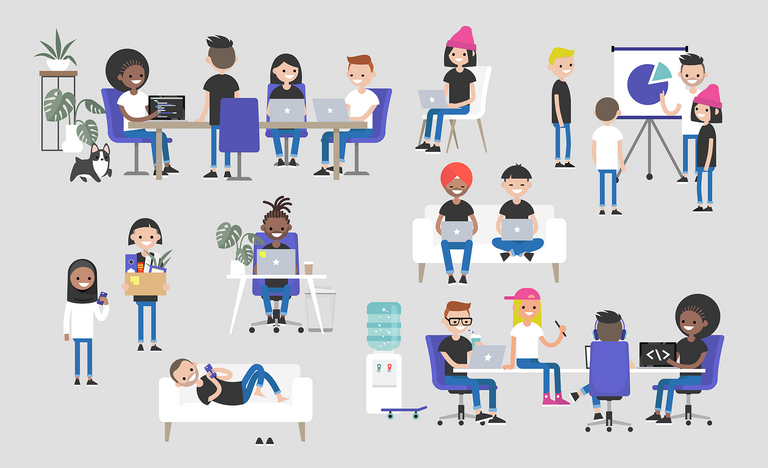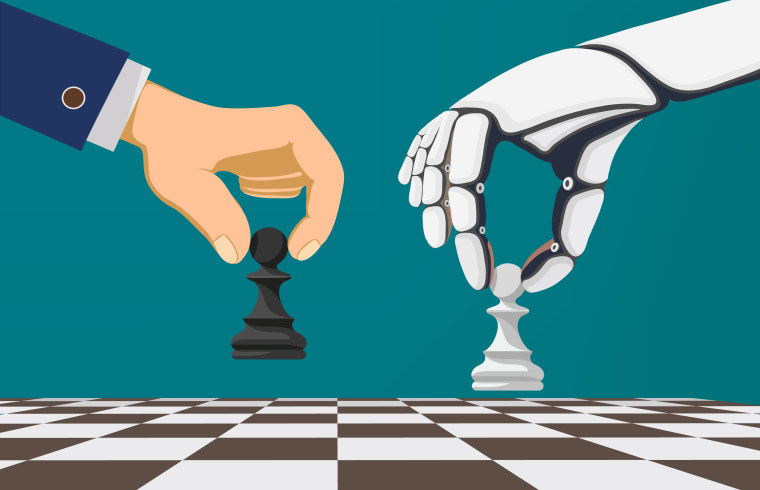On May 11, 1997, Deep Blue arrived to change it all… That day was the end of an era and the beginning of another.
During my childhood, I had the opportunity to watch my dad play a lot of chess matches. I was astonished by his mental speed and his ability to consider several moves at the same time. He used to study many chess players, but Bobby Fisher was his favorite. I thought it was impossible, almost magical to hear the “tic” and intensity of the chess clock when he played matches of 1, 2 or 5 minutes long. I couldn’t understand how he could process and anticipate his opponents’ moves in such a short time. He used to frequent chess cafes where he competed against other people. He also used to set up some matches at home with a couple of friends that shared the same passion. As time progressed, those meetings started to diminish, and my dad started to play less. During that period, there were some chess computer games, but even set to the highest level of difficulty, they couldn’t beat him in “ping pong matches”. However, this quickly changed …
It was in February 1996 when the challenge between Deep Blue and Garry Kasparov was set up. At that time, Kasparov had won 11 straight world championships, and he seemed invincible. Kasparov won that series against Deep Blue by 4-2. Just one year later, more precisely, on May 11, 1997, the improved version of Deep Blue beat the champion 3½-2½. With a memory that duplicated its intercessor, it was capable of processing 200 million positions per second.
Similarly to chess, where we have 16 different pieces of 6 different types and almost an infinite number of variables, companies have to deal with roster planning complexity. Their employees have different functions, but even in a same function, they face different restrictions and preferences. Imagine that one of your “knights” couldn’t move in an “L”, and can only do a limited “I”, or that the queen “would prefer” to move only in black or white squares like a bishop. The complexity would increase enormously.
Managing an endless number of variables
Work planners face these kinds of changes and individual restrictions on a daily basis. Planners must deal with an endless number of variables: employees that only work in certain shifts or time frames, that can only work certain days of the week or have particular restrictions for a particular day, who have different contracts with different time restrictions, that are capable of working in more than one function, etc. This sounds difficult, but if we consider that the planner is coping with a group of 300 employees with dynamic demands, this turns into a very complex task.
Just to explain this complexity in numbers, imagine that these 300 employees are rostered for 30 days. In a datasheet this gives us 9,000 cells to be filled. Even if you have a very simple shift model, for example: 4 shifts (Morning, midday, afternoon, night) and a Day Off shift, this results in (300×30)^5 different plans that the planner would principally explore. The result is 59049000000000000000 options – quite an impressive number that illustrates the complexity of this problem.
Limits of vertical thinking
The human mind uses a logic of vertical thinking to solve the challenge of shift building. Vertical solutions are based on the premise of existing knowledge, where we search for the best option at hand to solve the problem. The essence of the logic is, that when we make a decision, we need to have a justification and we base every decision in the principle of avoiding “mistakes”. This in chess, many times, is not the best option, where you could sacrifice pieces with the objective of achieving a major benefit. Due to the complexity that a roster plan has, it is practically impossible to program or “play” with the shifts in that manner.
Kasparov described this in a perfect way after his first match during the second challenge when Deep Blue made a move without an immediate material advantage; pushing a pawn to a position where it could be easily captured.
“It was a wonderful and extremely human move,” Kasparov noted, and this apparent humanness threw him for a loop. “I had played a lot of computers but had never experienced anything like this. I could feel — I could smell — a new kind of intelligence across the table.”, he explained in an interview for Time.
This seemingly “human” movement later proved to be a consequence of the huge processing capabilities of Deep Blue. The machine could anticipate a future material advantage produced by the sacrifice of the pawn that would only be perceptible several moves ahead. This is exactly what we would face with a workforce management optimizer, where sometimes some coverage on a particular day has to be sacrificed, or a day off is given without an apparent reason, all to break a shift sequence to avoid having bigger coverage problems in the future.
Those who have manually managed rosters, no matter the “method” used, beginning from the last days and moving to the left, from the middle to the extremes, placing the restrictions beforehand and completing the shifts afterwards, or any other tactic, have all faced the same problems. The dynamic nature of the requirements and the difficulty behind them are so high that later changes to shifts result in suboptimal and subjective solutions, where we are prone to mistakes and even omissions of legal and union rules or employee preferences.
Reaching optimal solutions by anticipating
Magnus Carlsen, the youngest Chess Master in history, and the youngest to obtain the first position in the Elo rating system (13 and 19 years old), explains in an interview the reasons behind this. Whenever he competes, he can mentally analyze between 15 and 20 moves ahead, but he explains that the trick is his ability to evaluate the final results of the calculations and potential scenarios.
This skill of anticipation, of thinking and reaching globally optimal solutions, is basically what an advanced workforce management system with a powerful algorithm based on Artificial Intelligence (AI) can achieve. In contrast to Garry Kasparov, Bobby Fisher, or even the unique Magnus Carlsen, we don’t need extraordinary gifts and capacity to operate this system and achieve optimal results in a fraction of the time.
Closing Ideas…
AI applied to different industries is going to change the way we do things, and workforce management is not an exception. The days are numbered for manually managed rosters. The increasing demands of employees and the dynamism the different industries face, is too much for the human mind. The benefits behind this type of technology in terms of efficiency, life quality results, and improvements in the service delivered to clients, are notorious. Companies that do not view this as a competitive advantage will become obsolete.



